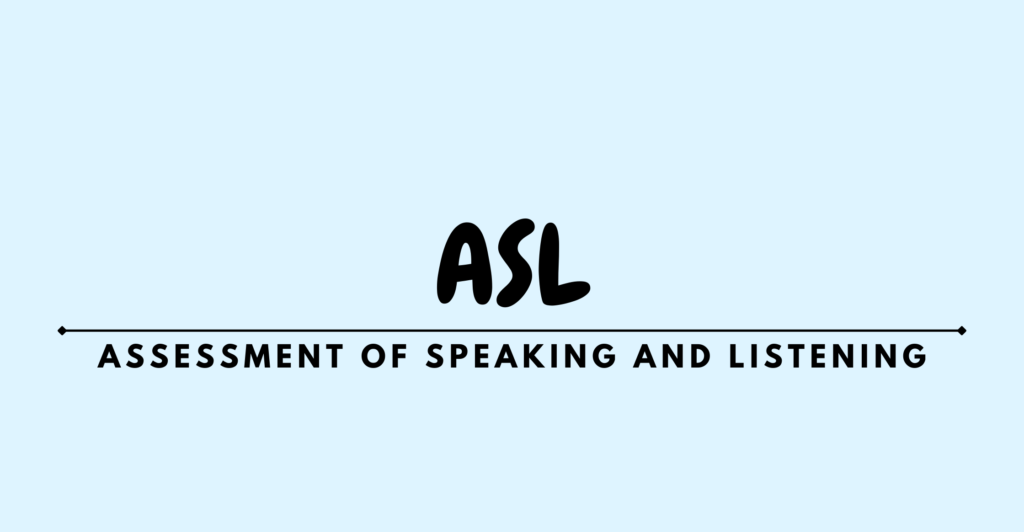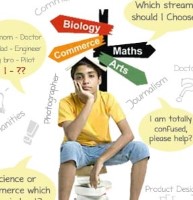Assessment for speaking and listening is a way to measure how well a person can communicate orally. It is important for language learners and speakers of all ages, as it helps to ensure that they are developing the skills they need to communicate effectively in real-world situations.
Introduction

Welcome to the world of assessing speaking and listening skills—a crucial dimension of effective communication. In this introduction, we’ll delve into the purpose, significance, and the audience for this assessment journey.
Purpose and Scope
The purpose of assessing speaking and listening skills is to evaluate an individual’s ability to communicate and comprehend information effectively through verbal means. This assessment helps in understanding how well a person can express thoughts, engage in conversations, and interpret spoken language.
Importance of Assessing Speaking and Listening
Speaking and listening are fundamental communication skills essential for success in education, career, and social interactions. Assessing these skills provides insights into an individual’s ability to convey ideas clearly, collaborate with others, and grasp information accurately.
Target Audience
This assessment is designed for learners of all ages and backgrounds. It caters to students in educational institutions, professionals in various fields, and anyone seeking to improve their verbal communication and comprehension abilities.
Assessment Goals and Criteria
Assessment Goals:
| Goal No. | Assessment Goal |
|---|---|
| 1 | Evaluate speaking and listening proficiency. |
| 2 | Assess communicative competence. |
| 3 | Measure comprehension and interpretation skills. |
| 4 | Determine the ability to engage in meaningful conversations. |
| 5 | Evaluate pronunciation, fluency, and intonation. |
| 6 | Assess vocabulary usage and language appropriateness. |
Assessment Criteria for Speaking:
| Criteria No. | Assessment Criteria for Speaking |
|---|---|
| 1 | Pronunciation and Intonation |
| 2 | Fluency and Coherence |
| 3 | Vocabulary and Language Use |
| 4 | Task Fulfillment and Organization |
Assessment Criteria for Listening:
| Criteria No. | Assessment Criteria for Listening |
|---|---|
| 1 | Comprehension and Understanding |
| 2 | Listening for Specific Information |
| 3 | Inference and Interpretation |
| 4 | Note-taking and Summarization |
Assessment Design and Methodology
1. Types of Assessments
- Formative Assessment: This is like a practice session. It helps us understand how well you’re doing while you’re learning. It’s like a checkpoint during your learning journey.
- Summative Assessment: Think of this like a final test. It helps us measure what you’ve learned over a period. It’s like the big moment where we see how well you’ve grasped everything.
2. Choosing How to Test You
- Conversations and Interviews: We’ll have a friendly chat to see how well you can express yourself and understand others. It’s like talking to a friend!
- Group Discussions: You’ll talk with others about a topic. It’s like a friendly gathering where we see how you communicate in a group.
- Oral Presentations: Imagine you’re telling a story to a group. We’ll see how engaging and clear you are while speaking to a larger audience.
- Listening Comprehension Tasks: We’ll play something for you to listen to, like a story or discussion. Then, we’ll ask questions to see how well you understood it.
3. Creating the Assessment Tools
- Rubrics: Think of this like a checklist. We’ve made a list of things we’re looking for, like how clearly you speak or how well you understand others. It helps us score your speaking and listening.
- Authentic Tasks: We’ve made tasks that resemble real-life situations. It’s like practicing in a safe environment before you step into the real world.
- Using Technology: Sometimes, we’ll use computers or devices to make the assessment more interesting. It’s like adding a fun twist to how we test you!
4. Giving the Test
- Preparing You: We’ll tell you what to expect and how to get ready. It’s like preparing for a game by knowing the rules.
- Creating a Comfortable Space: We want you to feel relaxed and at ease, so you can show us your best. It’s like arranging a cozy room to have a good conversation.
- Being Fair and Equal: We treat everyone the same way to make sure the assessment is fair. It’s like playing a game where everyone follows the same rules.
Development of Assessment Tools
Types of Assessments:
| Assessment Type | Description |
|---|---|
| Formative Assessment | Like practice sessions during learning to understand progress. It’s a friendly checkpoint along your learning journey. |
| Summative Assessment | Similar to a final test, measuring what you’ve learned over a specific period. It’s the big evaluation at the end to see how well you’ve grasped everything. |
Assessment Methods:
| Assessment Method | Description |
|---|---|
| Conversations and Interviews | Friendly discussions to assess expression and comprehension. It’s like having a chat with a friend. |
| Group Discussions | Conversations in groups to evaluate communication within a team. Similar to a friendly gathering to discuss a topic. |
| Oral Presentations | Speaking to a larger audience, evaluating engagement and clarity while presenting information. Like sharing a story or idea with a group. |
| Listening Comprehension Tasks | Listening to a passage or discussion and answering questions to measure understanding. It’s like listening to a story and then discussing it. |
Administering the Assessment
- Getting Ready: The Preparation Phase Before the assessment, we’ll give you a heads-up! It’s like knowing when the big game is. We’ll tell you what to expect and what to do to prepare. Just like a coach briefing the team before a match!
- Creating a Nice Space: The Assessment Environment We want you to be comfortable. So, we’ll set up a cozy, quiet room. It’s like arranging your favorite corner with comfy pillows and good lighting. We want you to feel at ease, just like having a nice chat with a friend.
- Starting the Test: Let’s Begin! When it’s time for the assessment, we’ll explain everything. It’s like the referee explaining the rules before the game starts. We’ll let you know what you need to do and answer any questions you have.
- Listening and Speaking: Show What You Know During the assessment, we’ll listen to you carefully. It’s like having a good listener when you’re sharing a story. We’ll ask questions, and you’ll get to express yourself, just like having a conversation.
- Finishing Up: That’s a Wrap! When the assessment is done, it’s like the game ending. We’ll thank you for participating and let you know what comes next. It’s like the players shaking hands after a match. We’ll provide feedback, so you know how you did and how you can improve for next time.
Practical Implementation
Preparing for the Assessment:
| Step | Description |
|---|---|
| 1 | Define assessment objectives and outcomes. |
| 2 | Design assessment components and guidelines. |
| 3 | Develop speaking and listening tasks and materials. |
Conducting the Assessment:
| Step | Description |
|---|---|
| 1 | Arrange a suitable assessment venue with audio equipment. |
| 2 | Brief participants on the assessment process and expectations. |
| 3 | Administer speaking tasks and evaluate performances. |
| 4 | Administer listening tasks and evaluate comprehension. |
Evaluation and Feedback:
| Step | Description |
|---|---|
| 1 | Collect and compile assessment scores for analysis. |
| 2 | Analyze assessment data to identify trends and areas for improvement. |
| 3 | Provide individualized feedback to participants. |
Conclusion
The Assessment for Speaking and Listening serves as a pivotal tool in evaluating an individual’s communication proficiency. It navigates the intricate domains of speaking and listening, two fundamental skills that underpin effective human interaction. This assessment, designed with careful consideration and a clear set of objectives, seeks to measure an individual’s ability to articulate thoughts coherently and comprehend spoken language.
Key Takeaways:
- Skillful Communication Evaluation: The assessment meticulously examines speaking and listening abilities, encompassing pronunciation, fluency, vocabulary usage, comprehension, and interpretive skills. It offers a comprehensive snapshot of an individual’s communicative competence.
- Holistic Approach: By adopting a multifaceted approach, the assessment provides a well-rounded evaluation. It does not merely assess the surface aspects of speaking and listening but delves deeper, considering nuances such as intonation, fluency, and linguistic accuracy.
FAQs
The Assessment for Speaking and Listening is a structured evaluation designed to assess an individual’s abilities in effectively speaking and listening in a particular language. It examines pronunciation, fluency, vocabulary usage, comprehension, and more.
Assessing speaking and listening skills is crucial as effective communication is a fundamental life skill. It helps in understanding an individual’s ability to express thoughts clearly and comprehend spoken information accurately.
The assessment typically involves various methods such as conversations, presentations, listening comprehension tasks, and group discussions. These methods are designed to simulate real-life communication scenarios.
Yes, the assessment is often adapted to suit different proficiency levels. The criteria for evaluation and the complexity of tasks may vary based on the intended proficiency level of the participants.
Read Also
Related posts:
- AMC Full Form: Benefits, Components, Needs, Advantage
- ORS Full Form: Dehydration, Myths, Flavors, Varieties & Facts
- PCC Full Form: Importance, Types, Application Process
- PAN Full Form: Legal Provisions, Regulations,
- BRB Full Form: Productive, Routine, Distractions
- MCD Full From: Introduction, Responsibility, Challenges
- CT Scan Full Form: Scans, price, Advantages
- USA Full Form: History, Economics,Technology, culture




















